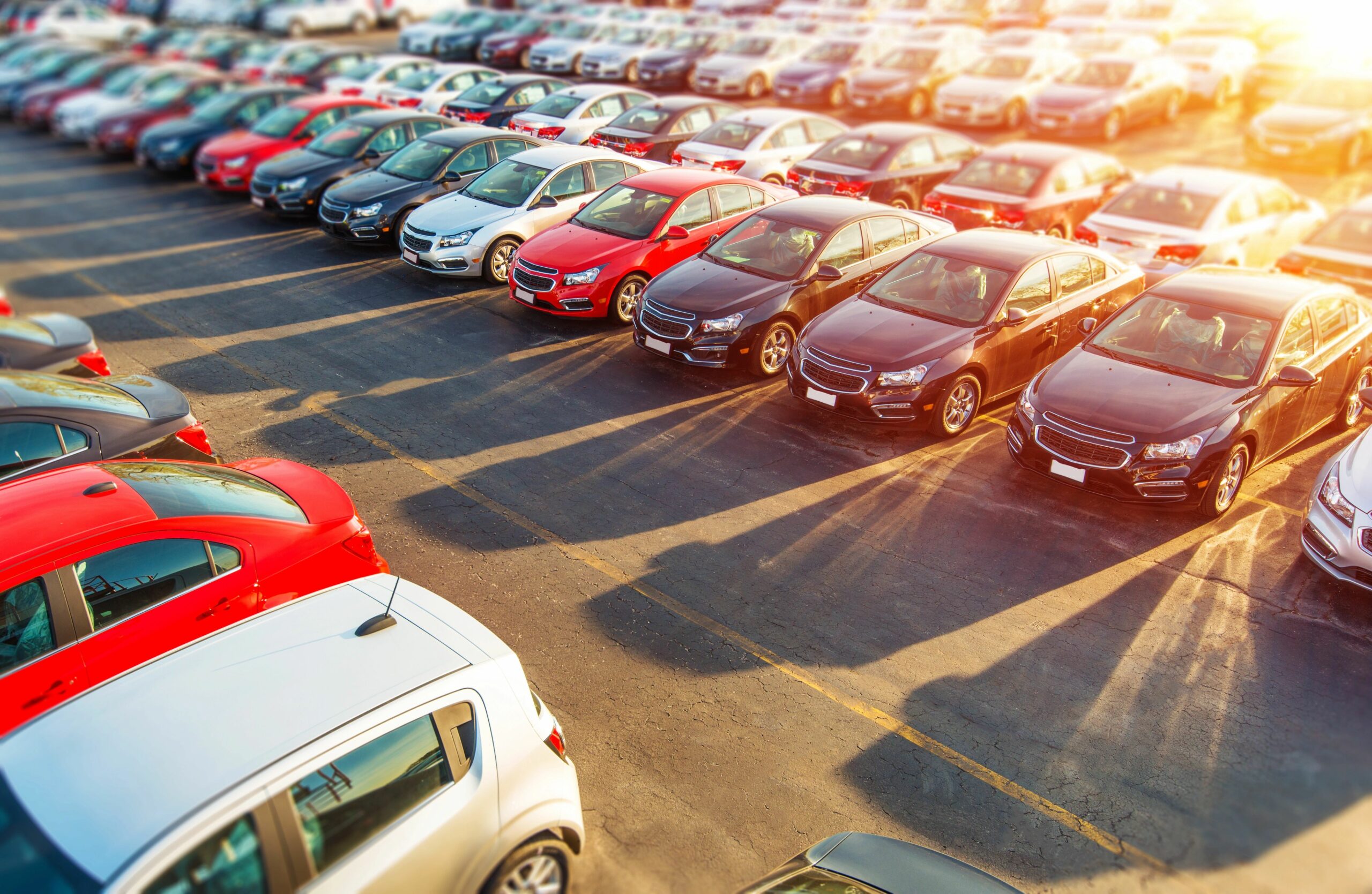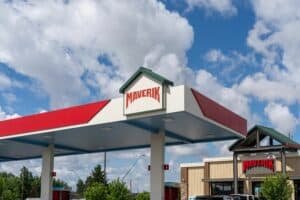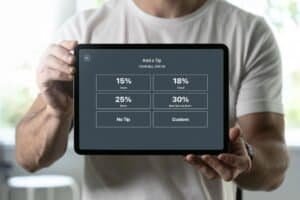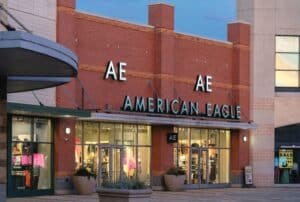
Welcomia/Depositphotos.com
October 14, 2025
As New Car Prices Top $50,000, and a ‘K-Shaped’ US Economy Forms, How Will Consumers Respond?
With the most recent news that the average price for a new vehicle topped $50,000 in the U.S. last month, according to Cox Automotive figures cited by CNBC’s Michael Wayland, a number of questions and concerns appear to be arising.
“The average price paid for a new vehicle last month topped $50,000 for the first time ever, Cox Automotive’s Kelley Blue Book reported Monday. Meanwhile, auto loan delinquency rates remain near all-time highs for those with low credit ratings,” Wayland wrote, pivoting to cite Cox Automotive executive analyst Erin Keating.
“While there are many affordable options out there, many price-conscious buyers are choosing to stay on the sidelines or cruising in the used-vehicle market. Today’s auto market is being driven by wealthier households who have access to capital, good loan rates and are propping up the higher end of the market,” Keating said.
And as Yahoo! Finance reporter Pras Subramanian detailed, this may come as little surprise to those who follow the automotive sector stateside. Also quoting Keating, Subramanian noted that the most popular vehicle purchased new in the United States was a Ford pickup costing more than $65,000, bucking the popular wisdom that rising car prices were stopping buyers in their tracks.
Keating went on to note that while wealthier Americans were faring relatively well, leveraging low rates and growing capital to splash out on expensive vehicles, the $20,000 market for cars was “nearly extinct” — lower-income Americans either opting for used cars or trucks or sitting on the sidelines entirely.
With pricy EVs and higher-end rides dominating the new vehicle sales market — EV sales trended upward to reach a 10.5% market share in Q3, largely thanks to Tesla, per Electrek — there could be more to the story than the headline itself represents.
The K-Shaped Economy, Rising Delinquency Rates, and $1.66 Trillion in US Auto Debt Backdrop New Car Price Breakthrough
A confluence of factors are emerging contributing to a muddled portrait of the auto segment, as well as the broader U.S. economy.
- The K-shaped economy: Essentially speaking to a massive diverging in the reality of lower-income American consumers with the wealthier counterparts, the K-shaped economy was the topic of conversation on CNBC’s “Squawk on the Street.” Apollo Global Management chief economist Torsten Slok noted that significant affordability concerns (both in terms of vehicles and in terms of the broader economy), in addition to an uptick in auto loan delinquencies, were becoming more prominent.
- The U.S. reaches $1.66 trillion in total auto debt: According to the Consumer Federation of America, auto finance has reached “a breaking point.” And as KBB underscored, the situation wasn’t about to get any better, with tariff pressures and a healthy market for upper-income Americans providing purchasing power to press ahead. However, New York Fed data from 2024 also indicated that subprime borrowers weren’t the only ones struggling: Car buyers with above average FICO scores (620-679) remained twice as likely to fall behind on regular payments as compared to pre-pandemic levels.
Overall, though, Keating noted that new car pricing was always inflationary in nature — and that top price barriers are always, eventually, subject to breaking, though not without one final caveat.
“We’ve been expecting to break through the $50,000 barrier,” Keating said. “That’s today’s market, and it is ripe for disruption.”
Discussion Questions
With average new car sale prices continuously climbing despite economic pressures on the middle- and lower-income consumer bases, can we expect new models (or entrants) to focus on bottom-line affordability? Does such an opportunity actually exist?
Will the effect of many U.S. car buyers being priced out of the market lead to demand for value-oriented new car models, or will used cars continue to take on this demand?
Do you see the K-shaped U.S. economy righting itself in the near future? Why or why not?
Poll
BrainTrust
Cathy Hotka
Principal, Cathy Hotka & Associates
Gene Detroyer
Professor, International Business, Guizhou University of Finance & Economics and University of Sanya, China.
Frank Margolis
Executive Director, Growth Marketing & Business Development, Toshiba Global Commerce Solutions
Recent Discussions







The response depends on the consumer segment. Middle- and higher-income consumers will continue to have the capability to spend but will likely become more cautious about their spending. We already see a lot of signals in our data that many in the middle part of this group are trading down. Lower-income consumers will be more constrained in their habits, and it is unreasonable to expect any meaningful real growth here.
In the near-term, used cars – due to availability – will absorb this economic shock. What remains to be seen is what happens to used-car prices and if they will inflate, as we saw during 2020/2021.
However, I do expect to see more value-priced options in the future, whether as replacements to previous models (ex: Ford Ranger) or as a response to Chinese vehicles (ex: a lower-priced Tesla Model Y).
Despite economic pressures on middle- and lower-income consumers, the high average new-car price signals limited near-term potential for a mass-market “affordability push” in new-vehicle models or entrants. Automakers face steep input cost inflation, regulatory burdens (especially with EVs), and financing headwinds — so launching genuinely budget-priced new models is technically feasible but strategically difficult. Instead, much of the priced-out demand is already shifting to the used-vehicle market, which remains structurally positioned to absorb value-sensitive buyers.
Regarding the “K-shaped” nature of the U.S. economy — the data reinforce a bifurcation: higher-income buyers driving elevated new-car pricing while those in the lower tiers are sidelined or pushed into used cars. Unless there is a substantial lift in wage growth for the lower and middle classes, easing of credit conditions, or major cost-disinflation in vehicle manufacturing, I don’t expect a swift “righting” of this divergence. The risk is that the upper arm of the “K” keeps rising (premium / luxury, new-car, EV buyers) while the lower arm remains stagnant or even regresses — meaning the structural divide likely persists.
Keep in mind that consumers are freaked out on every grocery trip, and they know that nobody in a position to help them cares. It goes without saying that a cool new car isn’t in their future. The question in my mind is how they plan to rebel…
With current economic pressures, many middle and lower-income buyers will stick with used cars. Even if new car prices came down, many of these households don’t have disposable income to spend right now. The used car market will likely absorb most of that demand.
The K-shaped – K?? I’ve always heard it called a V shaped, anyway… – has been an issue for a half century. Nothing going on now is about to “right” this…if there’s any movement it’s toward worsening it.
Car manufacturers need to figure something out because having to pay $50,000+ for a car when you are trying to care of your family is insane. Sorry, car enthusiasts. Car prices are outta hand.
Even many of the car enthusiasts and club members I know and speak with regularly believe new car prices are out of hand. I think part of the issue is todays cars have a sameness about them, and fewer of today’s models are different or better in any meaningful way.
There is a possibility that we are experiencing a K-shaped recovery, but this question is highly debatable and political, as current economic trends indicate other factors driving upswings and blockages of certain sectors.
After the pandemic, some economists contend that we were actually in a K-shaped recovery, but at present, with a GDP, inflation under control, and interest rates down, we are in a much broader upswing.
Technology and finance are thriving, while others, such as hospitality and retail, struggle to recover, but not because of a poor economy. More so because of changes in the way consumers buy and spend.
Recovery…??? Recovery……???
The K-shaped economy has been around for decades, and with today’s economic policies, it is only getting exacerbated.
As for automobiles, a good portion of the world is seeing excellent, less expensive automobiles from China or made by Chinese companies in South East Asia, Europe and South America. Invite some of their manufacturers to the U.S. and create competition for quality and price.
It’s not an uptick in auto loan delinquencies. It’s a trend of several months now. And the trend line shows no indication of flattening out. The choice between buying groceries and making car payments isn’t going to get easier any time soon. In fact, it will get harder before it gets easier. Demand for affordable autos? Yeah, of course there is, and will continue to be. And in what tariff-free and inflation-free zone will those autos be manufactured? The bifurcation of our economy is happening before our very eyes.
In recent years Americans have seen the market put a premium of 8% to 20% on good and reliable used cars, even with higher miles. But the allure is not only that used cars have depreciated and cost less. New cars are now built with electronics and sensors which render most of us useless to perform car maintenance and diagnose problems, effectively putting us at the mercy of whatever the dealership service department says.
Now that the average price is hitting $50,000, there’s an opening for sub-$30,000 cars to be simpler and stripped of things like lane warning, speed limit warnings, flat screen-designed radios and heat/ac (to knobs, dials), and yes, maybe even the maligned (or beloved) crank windows.
This $50,000 threshold marks the moment when a large segment of American consumers permanently lost access to new transportation. The used market is a temporary shock absorber, not a solution. Car manufacturers can build more affordable vehicles, as evidenced by other markets, but will they do so given current incentive structures? Without policy intervention or a genuine commitment to volume-based affordable production, we’re simply watching economic stratification harden into permanent consumer classes.
The question for retailers across categories: when your entry-level segment becomes structurally unprofitable, do you abandon it entirely or find ways to serve it sustainably? The automotive industry’s answer appears to be abandonment. If that pattern spreads to other durable goods categories, we’re not just dealing with bifurcated markets—we’re dealing with missing markets for a growing percentage of the population.
Times have changed. We’ve swung from consumers trading up to premium vehicles while flush with pandemic money to browsing used vehicles (if any) as inflation and layoffs have risen. Our consumption upgrade gave way to shrewd, cautious consumption — except for those fortunate enough to be at the top of the K.